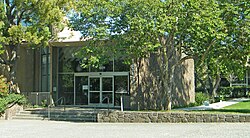
Silicon Valley is a region in Northern California that is a global center for high technology and innovation. Located in the southern part of the San Francisco Bay Area, it corresponds roughly to the geographical area of the Santa Clara Valley. The term "Silicon Valley" refers to the area in which high-tech business has proliferated in Northern California, and it also serves as a general metonym for California's high-tech business sector.
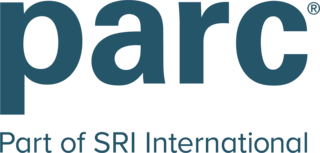
SRI Future Concepts Division is a research and development company in Palo Alto, California. It was founded in 1969 by Jacob E. "Jack" Goldman, chief scientist of Xerox Corporation, as a division of Xerox, tasked with creating computer technology-related products and hardware systems.

Palo Alto is a charter city in the northwestern corner of Santa Clara County, California, United States, in the San Francisco Bay Area, named after a coastal redwood tree known as El Palo Alto.

The Xerox Alto is a computer system developed at Xerox PARC in the 1970s. It is considered one of the first workstations or personal computers, and its development pioneered many aspects of modern computing. It features a graphical user interface (GUI), a mouse, Ethernet networking, and the ability to run multiple applications simultaneously. It is one of the first computers to use a WYSIWYG text editor and has a bit-mapped display. The Alto did not succeed commercially, but it had a significant influence on the development of future computer systems.
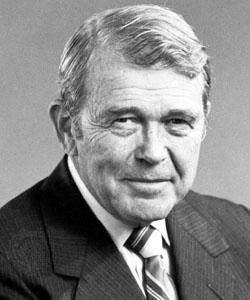
William Redington Hewlett was an American engineer and the co-founder, with David Packard, of the Hewlett-Packard Company (HP).
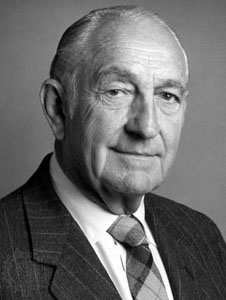
David Packard was an American electrical engineer and co-founder, with Bill Hewlett, of Hewlett-Packard (1939), serving as president (1947–64), CEO (1964–68), and chairman of the board of HP. He served as U.S. Deputy Secretary of Defense from 1969 to 1971 during the Nixon administration. Packard served as president of the Uniformed Services University of the Health Sciences (USU) from 1976 to 1981 and chairman of its board of regents from 1973 to 1982. He was a member of the Trilateral Commission. Packard was the recipient of the Presidential Medal of Freedom in 1988 and is noted for many technological innovations and philanthropic endeavors.

Lawrence Gordon Tesler was an American computer scientist who worked in the field of human–computer interaction. Tesler worked at Xerox PARC, Apple, Amazon, and Yahoo!.
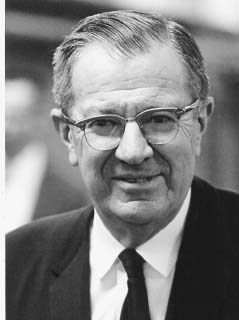
Frederick Emmons Terman was an American professor and academic administrator. He was the dean of the school of engineering from 1944 to 1958 and provost from 1955 to 1965 at Stanford University. He is widely credited as being the father of Silicon Valley.
SRI International's Augmentation Research Center (ARC) was founded in the 1960s by electrical engineer Douglas Engelbart to develop and experiment with new tools and techniques for collaboration and information processing.

The HP Garage is a private museum where the company Hewlett-Packard (HP) was founded. It is located at 367 Addison Avenue in Palo Alto, California. It is considered to be the "Birthplace of Silicon Valley". In the 1930s, Stanford University and its Dean of Engineering Frederick Terman began encouraging faculty and graduates to stay in the area instead of leaving California, and develop a high-tech region. HP founders Bill Hewlett and David Packard are considered the first Stanford students who took Terman's advice.
Varian Associates was one of the first high-tech companies in Silicon Valley. It was founded in 1948 by Russell H. and Sigurd F. Varian, William Webster Hansen, and Edward Ginzton to sell the klystron, the first vacuum tube which could amplify electromagnetic waves at microwave frequencies, and other electromagnetic equipment. Varian Associates split into three companies in 1999: Varian Medical Systems, Varian, Inc. and Varian Semiconductor.

Silicon Hills is a nickname for the cluster of high-tech companies in the Austin metropolitan area in the U.S. state of Texas. Silicon Hills has been a nickname for Austin since the mid-1990s. The name is analogous to Silicon Valley, but refers to the hilly terrain on the west side of Austin. High tech industries in the area include enterprise software, semiconductors, corporate R&D, biotechnology, the video game industry, and a variety of startup companies.
Abbey Silverstone is an early executive in the computer industry. He co-founded Silicon Graphics (SGI) with Jim Clark, and was its first Vice President of Operations until 1989.

The Hewlett-Packard Company, commonly shortened to Hewlett-Packard or HP, was an American multinational information technology company headquartered in Palo Alto, California. HP developed and provided a wide variety of hardware components, as well as software and related services to consumers, small and medium-sized businesses (SMBs), and large enterprises, including customers in the government, health, and education sectors. The company was founded in a one-car garage in Palo Alto by Bill Hewlett and David Packard in 1939, and initially produced a line of electronic test and measurement equipment. The HP Garage at 367 Addison Avenue is now designated an official California Historical Landmark, and is marked with a plaque calling it the "Birthplace of 'Silicon Valley'".

Stanford Federal Credit Union is a federally chartered credit union located in Palo Alto, California. It provides banking services to the Stanford community. Stanford FCU has over $3.6 billion in assets and serves over 80,000 members.
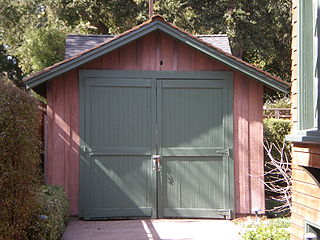
The rules of the garage are a set of eleven rules that attempt to encapsulate the work ethos that Bill Hewlett and David Packard set when they founded Hewlett-Packard. Since Hewlett-Packard was one of the earliest success stories of the information technology sector, it also used to more broadly describe the work ethos of Silicon Valley.
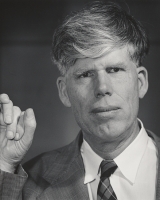
Russell Harrison Varian and Sigurd Fergus Varian were American brothers who founded one of the earliest high-tech companies in Silicon Valley. Born to theosophist parents who helped lead the utopian community of Halcyon, California, they grew up in a home with multiple creative influences. The brothers showed an early interest in electricity, and after independently establishing careers in electronics and aviation they came together to invent the klystron, which became a critical component of radar, telecommunications and other microwave technologies.
Mayfield Mall was a shopping mall in Mountain View, California, United States. Operational from 1966 to 1984, it was the first air-conditioned, enclosed shopping mall in Northern California, though it has been an office complex since the 1980s. In 2013, Google rented the entire 500,000 square feet (46,000 m2) property and ultimately purchased it in 2016 for $225 million and is known as the company's Building RLS1.
